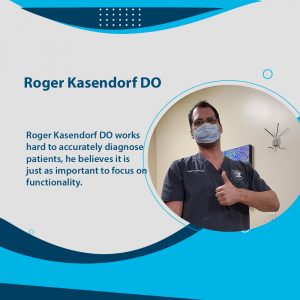Regenerative Therapies: A Glimpse into Cutting-Edge Medicine


In recent years, regenerative therapies have emerged as a promising frontier in the field of medicine. These groundbreaking treatments offer hope to individuals suffering from a wide range of ailments, from sports injuries to degenerative diseases. By harnessing the body’s innate healing mechanisms, regenerative therapies hold the potential to transform the way we approach healthcare. In this article, we’ll delve into the world of regenerative therapies, exploring what they are, how they work, and the exciting possibilities they offer.
The Science Behind Regenerative Therapies
Regenerative therapies encompass a diverse range of medical approaches that share a common goal: to facilitate the repair, replacement, or regeneration of damaged tissues and organs. At their core, these treatments leverage the body’s ability to heal itself, often using cellular and molecular techniques to enhance the natural healing process.
Stem Cell Therapy: Unlocking the Body’s Repairmen
Stem cell therapy is perhaps the most well-known form of regenerative therapy. Stem cells are undifferentiated cells capable of developing into various cell types within the body. This remarkable ability makes them invaluable for regenerating damaged tissues. Stem cell therapy involves isolating these cells from sources like bone marrow or adipose tissue and then introducing them into the injured or diseased area.
Platelet-Rich Plasma (PRP) Therapy: The Power of Blood
PRP therapy is another regenerative technique that has gained popularity, especially in sports medicine. This treatment utilizes a patient’s blood. After a sample is taken, it is spun in a centrifuge to separate the platelets and growth factors from other components. The resulting PRP is then injected into the injured area, stimulating tissue repair and accelerating the healing process.
Gene Therapy: Rewriting the Genetic Code
Gene therapy represents an exciting frontier in regenerative medicine. It involves the introduction or alteration of genes within a patient’s cells to treat or prevent disease. This therapy can potentially correct genetic defects responsible for inherited disorders or boost the body’s natural defenses against diseases like cancer. While gene therapy is still in its early stages, it holds enormous promise for the future of medicine.
The Application of Regenerative Therapies
Regenerative therapies have found applications in various medical fields, offering hope to patients with conditions that were once considered untreatable.
Orthopedics and Sports Medicine: From Injuries to Recovery
Athletes often suffer from injuries that can sideline their careers. Regenerative therapies like stem cell and PRP treatments have become popular options for addressing conditions such as torn ligaments, tendinitis, and cartilage damage. These therapies accelerate healing, reduce pain, and help athletes get back in the game faster.
Neurodegenerative Diseases: Battling the Unthinkable
Regenerative therapies are also being explored as potential treatments for neurodegenerative diseases like Parkinson’s and Alzheimer’s. Researchers are investigating how stem cells and gene therapy can replace or repair damaged brain cells, offering hope for those suffering from these devastating conditions.
Cardiovascular Disease: Healing the Heart
Cardiovascular diseases are a leading cause of death worldwide. Regenerative therapies hold promise for repairing damaged heart tissue and improving cardiac function. Stem cell therapies are being investigated as a means to regenerate heart muscle cells and enhance recovery after heart attacks.
Dermatology: Age-Defying Skin
The field of dermatology has embraced regenerative therapies for aesthetic and therapeutic purposes. PRP therapy is widely used for skin rejuvenation, stimulating collagen production, and reducing the signs of aging. It is also employed in the treatment of hair loss, helping individuals regain their confidence.
Challenges and Future Directions
While regenerative therapies offer tremendous potential, they are not without challenges and ethical considerations. One of the key challenges is ensuring the safety and efficacy of these treatments, as they often involve complex biological processes. Additionally, issues related to cost, accessibility, and regulatory approval must be addressed to make these therapies widely available.
Despite these challenges, the future of regenerative medicine is bright. Ongoing research continues to expand our understanding of regenerative processes, and innovative technologies are being developed to refine existing therapies and create new ones. With continued scientific advancement and responsible implementation, regenerative therapies have the potential to revolutionize healthcare and offer new hope to countless patients.
Regenerative therapies represent a remarkable convergence of science, medicine, and hope. By harnessing the body’s healing capabilities, these treatments hold the promise of transforming the way we approach healthcare. From orthopedics to neurology and from cardiology to dermatology, regenerative therapies are making strides in various medical fields, offering new avenues for treatment and recovery.
As research and development in regenerative medicine continue to advance, it’s crucial to maintain a balance between innovation and safety. Ethical considerations, regulatory frameworks, and accessibility must be carefully navigated to ensure that these groundbreaking therapies benefit as many individuals as possible. In the coming years, we can look forward to witnessing the evolution of regenerative therapies as they unlock the healing potential within us all.
